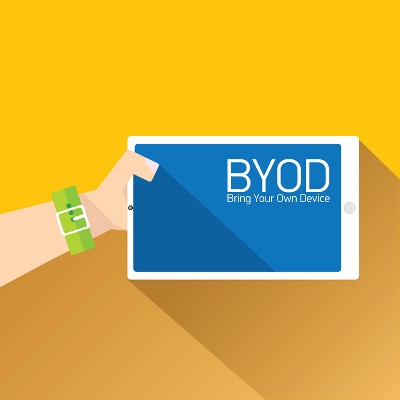PCSOFT Blog
Getting Started With BYOD? Be Sure to Cover These 3 Concerns
Bring Your Own Device, or BYOD, continues to grow into one of the most accepted practices within an organization. Yet, one major problem has always plagued BYOD in the form of security. Thankfully, with the help of mobile device management, businesses are able to minimize this risk while leveraging the benefits that BYOD offers.
About 92 percent of employees at organizations which allow BYOD claim that they use smartphones for work purposes at least once every week and 40 percent from a survey by Software Advice found that users ran into fewer technical problems with their own devices. Since users are more familiar with their personal devices, it makes it easier to avoid technical problems that could require help desk support or maintenance.
While BYOD can be great when implemented properly, you need to remember that your employees’ personal devices are connecting to your in-house network. This presents a risk that needs to be approached strategically. To address these issues, try following these three guidelines for your Bring Your Own Device policy.
Data and User Access
Your data’s security should always be a top priority, especially when considering new technology solutions like BYOD. Your data security is only as strong as the security of the devices accessing it. It’s logical that the more devices accessing your business’s data, the more potential threats that it will be exposed to. Therefore, you should limit which devices and user accounts can access certain data. Thankfully, a BYOD policy lets you restrict data on a per-user and per-device basis, allowing you to keep sensitive information away from employees that have no business accessing it. The result is greater security without hindering operations.
Whitelisting and Blacklisting Applications
Some applications will request access to device data which may not sit well with your organization, such as an application demanding access to information not necessary for its functionality. For example, a smartphone flashlight app probably doesn’t need access to your contacts or text messages. A good BYOD policy will include mobile device management that allows your organization to whitelist and blacklist apps, keeping your data safe from unapproved access.
Security Best Practices
Employee education is one of the most important parts of implementing a BYOD policy. Since your users will be using their own devices to perform work-related tasks, they will need to understand how to keep themselves safe, both in the office and at home. Regularly quiz them on security best practices and take care to show them why it’s important. Doing so lets you protect your infrastructure while improving your employees’ knowledge of security, making them greater assets in the long run. If your business doesn’t have time to train your staff, perhaps an outsourced provider like PCSOFT can lend a hand.
To learn more about effective BYOD policies and mobile security practices, reach out to us at 02 98730080.


Comments